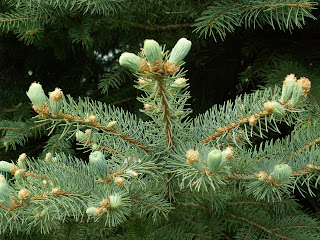Evergreen Care: Fall Cast-Off

It's late fall now and the thoughts of the holidays begin to take hold. Many are still raking up the leaves in our yards and may be noticing that our evergreens are getting some brown spots towards the inner needles. This is Fall Cast-Off. Like deciduous trees, evergreens react to the changing sunlight exposure that fall and winter bring. Since there is chlorophyll in the needles just like in deciduous leaves it needs a certain amount of light to be maintained. When the light decreases the tree will shed or cast-off some of the older inner needles. this helps it to conserve the available energy that it has. There is no cause for alarm, this is as natural as the leaves falling off the trees around it. The reason the tree loses the inner needles is because they are not as exposed to the open sunlight as the surface needles. That is why when you look at an older tree, you will notice that it grows out like an umbrella. Do not mistake cast-off for other diseases that can materialize









